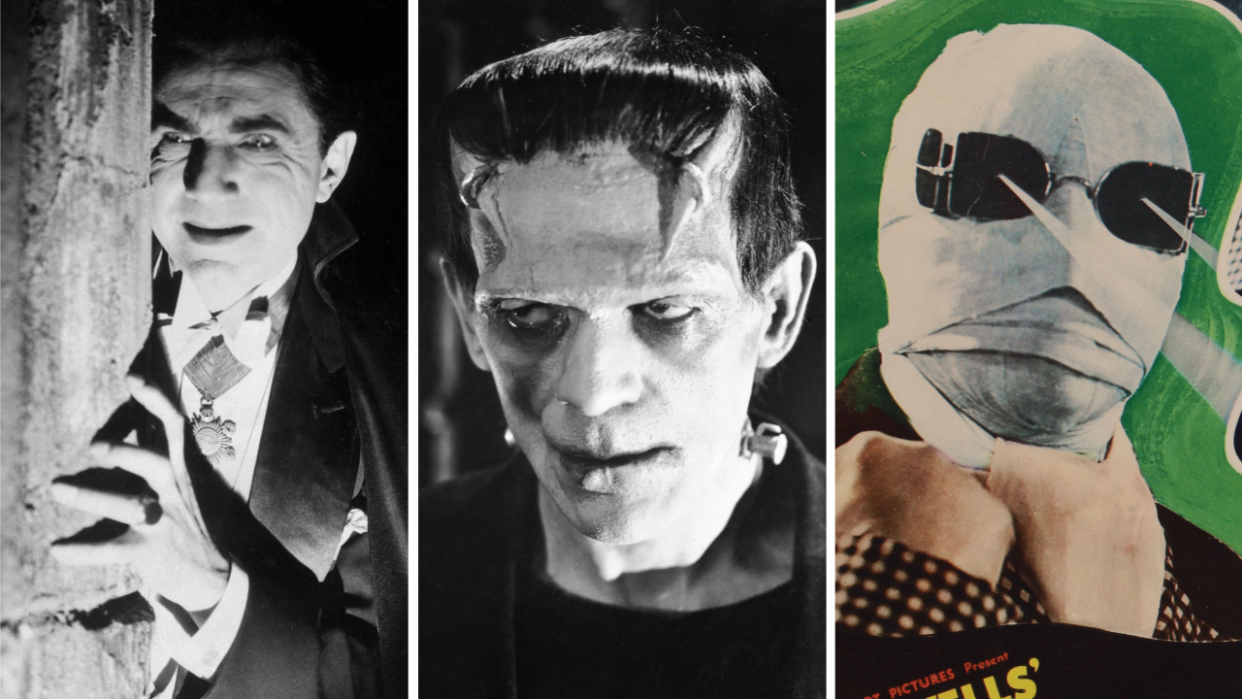The 10 greatest Universal monster movies, ranked

- Oops!Something went wrong.Please try again later.
- Oops!Something went wrong.Please try again later.
- Oops!Something went wrong.Please try again later.
- Oops!Something went wrong.Please try again later.
- Oops!Something went wrong.Please try again later.
- Oops!Something went wrong.Please try again later.
- Oops!Something went wrong.Please try again later.
Universal are the studio when it comes to horror films. In the 1930s, their adaptations of Dracula and Frankenstein became legendary, informing generation after generation’s perspective on those characters. And the brand continues to terrify today, thanks to the recent Invisible Man and Mummy redos. You can’t have a Halloween night in without sticking at least one Universal monster movie on, so, below, Metal Hammer has compiled the 10 essential classics. From the black-and-white masterpieces to the modern remakes, these are the greatest Universal monster movies, ranked.

10. The Invisible Man (Leigh Whannell, 2020)
When Saw co-creator Leigh Whannell remade The Invisible Man in 2020, he transformed a parable about the advancement of science into a metaphor for abusive relationships. This version sees leading optics scientist Adrian Griffin torment his ex-girlfriend (Elisabeth Moss) using his invisibility. The relevance to what is sadly a very real-world horror made the story feel essential all over again.
9. The Mummy (Stephen Sommers, 1999)
Stephen Sommers’ remake of the 1932 Mummy film transformed it from a romantic and alluring slow burn into a swashbuckling action blockbuster. The writer/director clearly sought as much inspiration from Indiana Jones as he did tried and true horror classics: a fact that confused contemporary critics but has since resonated with audiences, especially following star Brendan Fraser’s recent career renaissance.
8. Dracula (George Melford, 1931)
It’s one of horror’s greatest trivia facts: while Tod Browning filmed the seminal Dracula, Universal used the same sets at night to make a Spanish-language counterpart with a different crew. Although Carlos Villarías can’t match Bela Lugosi when it comes to charisma in a cape, director George Melford shot in a more lively and interesting way than Browning did for his film.
7. The Wolf Man (George Waggner, 1941)
At the height of Universal Monster-mania in the mid-’30s, the studio attempted a werewolf film, Werewolf Of London, only for it to bomb. The second go at the subgenre mercifully fared much better, making bank with stars Lon Chaney Jr and Bela Lugosi, and it deserved its success: The Wolf Man remains the template for werewolf lore in cinema.
6. The Mummy (Karl Freund, 1932)
It may be overshadowed by its remake for some, but The Mummy was Universal’s first great original horror story. The studio didn’t want to do another adaptation after Dracula and Frankenstein, tapping into the legend of Tutankhamun’s curse for inspiration. With a more-talkative-than-usual Boris Karloff starring, the result remains one of the most hypnotic offerings in the classic monster lineup.
5. Creature From The Black Lagoon (Jack Arnold, 1954)
Victorian monsters were passé by the 1950s, with the arms race turning horror towards science for inspiration. In turn, Creature From The Black Lagoon posited that evolutionary science had missed a beat, introducing a reptilian missing link stalking humans in the Amazon. The underwater scenes, performed by Ricou Browning, were groundbreaking, and “Gill-man” became the last original Universal monster to catch on.
4. Frankenstein (James Whale, 1931)
After the box office success of Dracula, Universal rushed more horror films into production, chief among which was Frankenstein. Director James Whale was assigned to the project, making the first in what would be his legendary line of horrors: the Englishman was able to retain the ethical tragedy of Mary Shelley’s novel while also upping its drama and monster scares for contemporary audiences.
3. The Invisible Man (James Whale, 1933)
The Invisible Man raised the bar when it came to special effects. In living up to its title, James Whale’s third Universal horror turned star Claude Rains invisible, and ingenious techniques were used to suggest his presence, from footprints in the snow to a bicycle moving “by itself”. The actor, at his most deranged, also gave the most underrated performance in classic Universal.
2. Bride Of Frankenstein (James Whale, 1935)
In returning to Frankenstein, James Whale essentially adapted the second half of Shelley’s original novel, where the monster escapes into the wild while his creator makes him a mate. Bride… was another technical milestone, with shots like the creature’s reflection in water unprecedented, and the tragedy of the character is even more heartbreaking this time around. As a sequel, it’s basically perfect.
1. Dracula (Tod Browning, 1931)
Objectively, Dracula is not the best-made film on this list. However, everything that it gets right has been embedded in the DNA of horror cinema for almost a century. Bela Lugosi remains the quintessential Dracula, to the point that his slicked-back hair and Eastern European accent are now signatures of the character (they were never in Bram Stoker’s novel). Edward Van Sloan’s cool and composed Van Helsing affirmed the character as the vampire’s greatest nemesis, while Dwight Frye’s erratic Renfield remains the measuring stick for the role. Today, Dracula is the essential cinematic text when it comes to both scary movies and the vampire himself, and you’re not a true aficionado of either until you’ve seen it.

